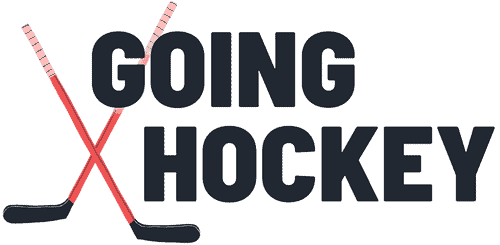Hockey is a sport that encapsulates both grace and grit, drawing in fans from around the world with its fast-paced action and physicality.
While many are familiar with iconic terms like “hat-trick,” “power play,” and “goon,” there exists a peculiar term in the hockey lexicon that has garnered attention and curiosity over the years – the “duster.”
What Is A Duster In Hockey?
“Duster” is an insult in hockey and refers to a player who sits on the bench all game “collecting dust.”
What Is A Duster In Hockey?
In hockey, the term “duster” is used colloquially to refer to a player who sees limited playing time or spends most of their time on the bench rather than actively participating in the game.
This label is often associated with players who are considered to be on the fringes of the team’s regular lineup and may not have a significant impact on the outcome of a game.

The term comes from the idea that players who see limited playing time are forced to sit on the bench, “collecting dust.” The term is also used to refer to players who are bad at skating.
While “duster” is not an official hockey term, it has become a part of the sport’s informal language and is commonly used by fans, players, and informal media to describe certain players.
Dusters are typically depth players or reserves who are often called upon when the regular roster players are injured or unavailable. They may possess the necessary skills to play at a given level, but due to the team’s depth or specific game situations, they find themselves with limited opportunities to showcase their abilities during a match.
What Is Dusted In Hockey?
The term “dusted” refers to a player getting beat cleanly and easily in a 1 on 1 situation. The term is closely related and shares a similar sentiment to the phrase, “left in the dust.”

Getting “dusted” implies that a player was not only beaten clearly in a 1 on 1 situation but that there was significant disparity of speed between the two players.
The term “dusted” is different from other skill-based words in hockey, such as deke and dangle, because the word doesn’t inherently entail any kind of creativity or stick-handling ability.
A player can get “dusted” without the opponent performing a single stick handle. If a player passes by another, easily – simply by skating – it could be described as getting “dusted.”
What Is The Difference Between Duster And Bender In Hockey?
In hockey culture, the terms “duster” and “bender” are both used to describe certain types of players, but they refer to different roles and skill levels on the ice.
- Duster
- As mentioned in the previous response, a “duster” is a player who sees limited playing time or spends most of their time on the bench. They are often considered as depth players or reserves who may not have a significant impact on the game’s outcome. Dusters typically have fewer opportunities to showcase their skills during a match due to the team’s depth or specific game situations.
- Bender
- A “bender,” on the other hand, is a term used to describe a player with poor skating abilities or technique. It is generally considered a derogatory term used by some players to mock or criticize others who are not proficient skaters. The name “bender” implies that the player’s ankles bend too much while skating, indicating a lack of proper technique or strength on the ice.
It’s important to note that while these terms are used within hockey culture, they can sometimes carry negative connotations and may not always reflect the true abilities or contributions of the players.

Hockey is a diverse sport with players of varying skill levels and roles, and it’s essential to respect and appreciate the efforts of all those who participate in the game, regardless of their label or nickname.
Are Goons Considered Dusters?
Goons and dusters are not considered the same thing in hockey.
They are two distinct terms that refer to different player roles and styles of play. The biggest difference between the two is that a “goon” has a defined role on a team whereas a “duster” doesn’t.
- Duster
- As explained earlier, a “duster” is a player who sees limited playing time or spends most of their time on the bench. They are often considered depth players or reserves who may not have a significant impact on the game’s outcome. The term “duster” is not related to a player’s style of play or physicality but rather refers to their playing time and role on the team.
- Goon
- A “goon” is a player known for their aggressive and physical style of play. They are often enforcers who protect their teammates by engaging in fights or intimidating opponents. Goons are typically willing to drop the gloves and participate in fights, and they play a role in enforcing on-ice discipline. In the past, goons were more prevalent in hockey, but their presence has diminished in recent years as the game has evolved and emphasized skill and speed.

It’s important to note that the term “goon” can also carry a negative connotation in some contexts, as it implies a player who relies heavily on physicality and fighting rather than skillful play.
The role of goons in hockey has been a subject of debate, with some fans and experts advocating for their presence as protectors, while others believe that the focus should be on skill and sportsmanship.
In summary, dusters and goons are two different player types in hockey. Dusters refer to players with limited playing time and no real “role” on the team, while goons are players known for their physical and aggressive style of play.


Leave a Reply